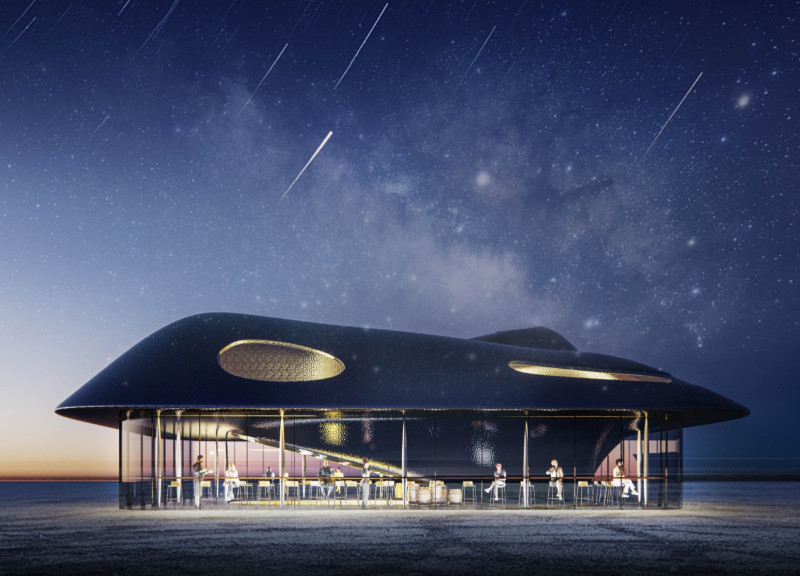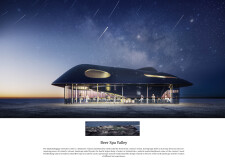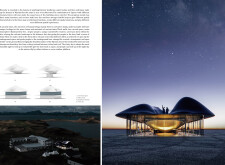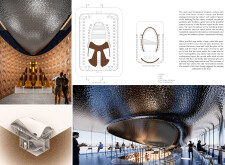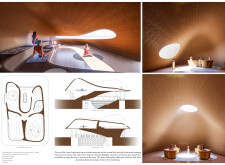5 key facts about this project
### Overview
The Beer Spa Valley project is located in the vicinity of Lake Mývatn, Iceland, amidst striking geological formations, including the Skútustaðagígar pseudocrater field. The design intent is to establish a harmonious relationship between the constructed environment and the natural landscape, enhancing visitors' sensory experiences in alignment with the area's unique topography.
### Spatial Strategy and Design Intent
The project’s architectural strategy centers around the interplay between human activity and the surrounding natural environment. Inspired by Iceland’s volcanic landscape, the design emulates natural landforms while creating spaces for diverse functions, including a beer bath, a bar, and a storage facility for the brewery. This layout facilitates a range of spatial experiences, balancing communal and individual interactions. The structure features an undulating roofline that echoes the contours of the landscape, integrating the building visually and contextually.
### Materiality and Functionality
A careful selection of materials underscores the project’s design ethos. The first-floor façade primarily utilizes glass to maximize transparency and foster a connection with the environment, allowing natural light to penetrate and offering sweeping views. The second-floor incorporates wood, which introduces warmth and a cave-like ambiance, enhancing visitor comfort. Durable ceramic tiles are used for flooring in functional areas, establishing continuity with the site's natural textures. Steel components ensure structural integrity, crucial for enduring the region’s environmental conditions.
Overall, the design accommodates various visitor experiences. The beer bath area is arranged to support both private and shared engagements, while the bar layout emphasizes scenic vistas. The subterranean storage space creatively mirrors the brewing process, featuring walls shaped like bottles and warm lighting that contrasts with the outdoor environment. This thoughtfully constructed environment not only promotes relaxation and social interaction but also deepens the connection between visitors and Iceland's rich natural heritage.


